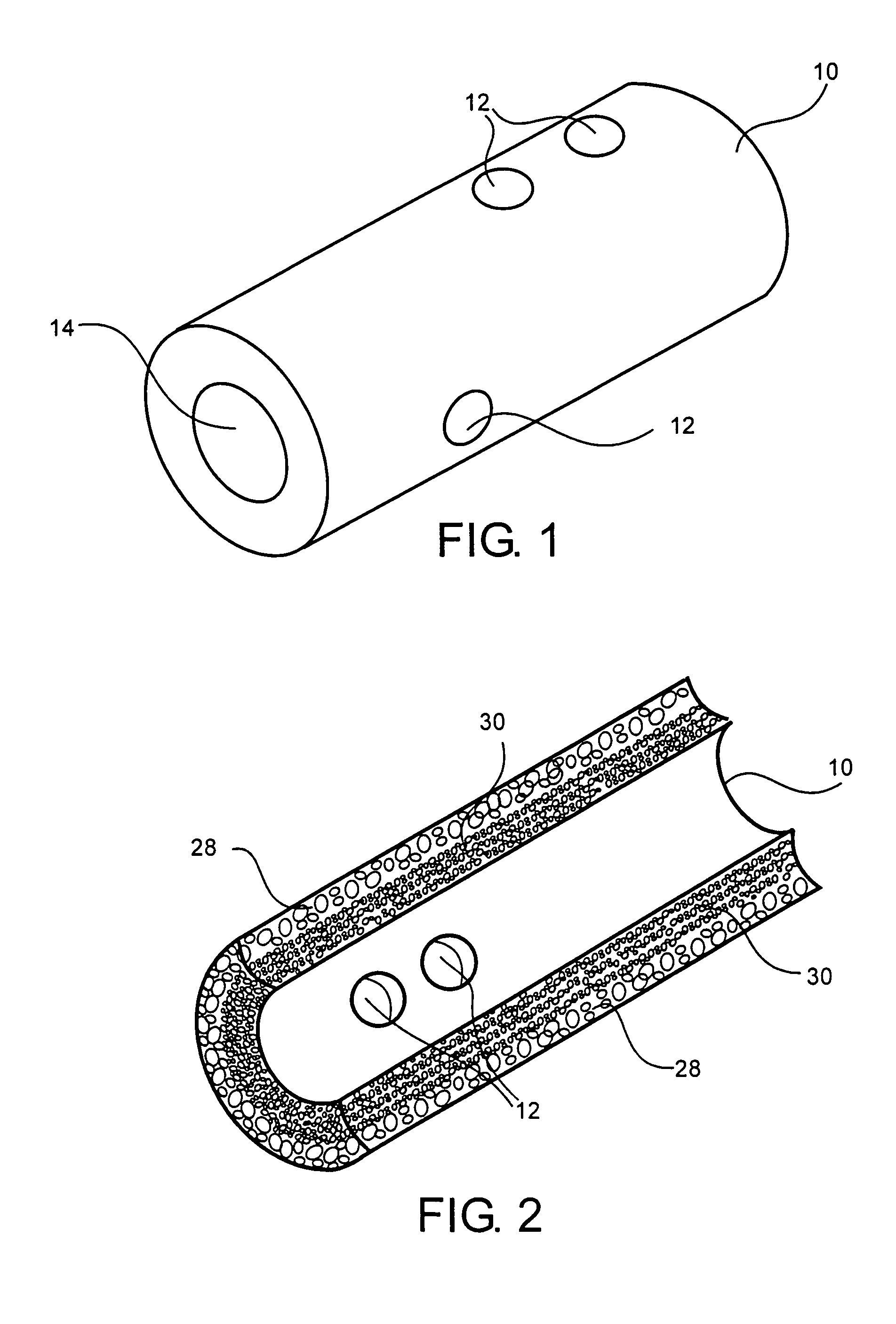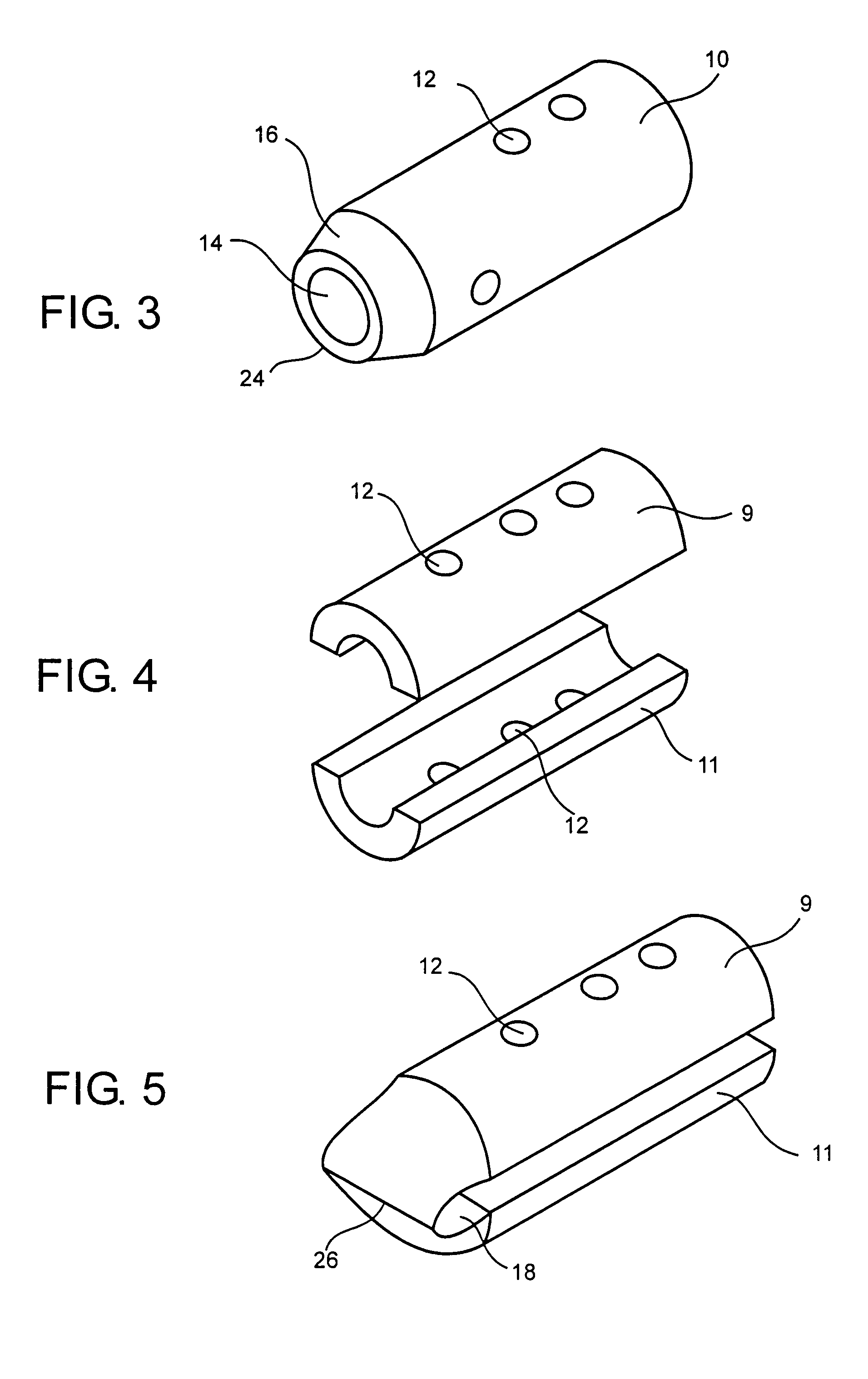Bone-tendon-bone implant
a technology of bone tendons and implants, applied in the field of bone tendons, can solve the problems of difficult processing, obtaining, and managing bone blocks, and achieve the effects of improving the quality of bone tendons and supporting the bone tendons
- Summary
- Abstract
- Description
- Claims
- Application Information
AI Technical Summary
Benefits of technology
Problems solved by technology
Method used
Image
Examples
example
[0048] BTB implants are assembled onto cadaver tibialis tendons on a graft preparation table by wrapping the tendons around the implants and securing them to the implants using No. 5 braided polyester suture. The implants are arthroscopically placed into cadaver knees using standard surgical technique, and secured in place with interference screws.
[0049] Knee samples are potted into testing fixtures using a fast-curing epoxy compound. Once the epoxy is cured, the samples are placed in a screw-type mechanical testing machine. The specimens are placed in tension until the graft construct fails. The implant graft assemblies are found to have pull-out strengths of 400 N and greater.
PUM
 Login to View More
Login to View More Abstract
Description
Claims
Application Information
 Login to View More
Login to View More - R&D
- Intellectual Property
- Life Sciences
- Materials
- Tech Scout
- Unparalleled Data Quality
- Higher Quality Content
- 60% Fewer Hallucinations
Browse by: Latest US Patents, China's latest patents, Technical Efficacy Thesaurus, Application Domain, Technology Topic, Popular Technical Reports.
© 2025 PatSnap. All rights reserved.Legal|Privacy policy|Modern Slavery Act Transparency Statement|Sitemap|About US| Contact US: help@patsnap.com



